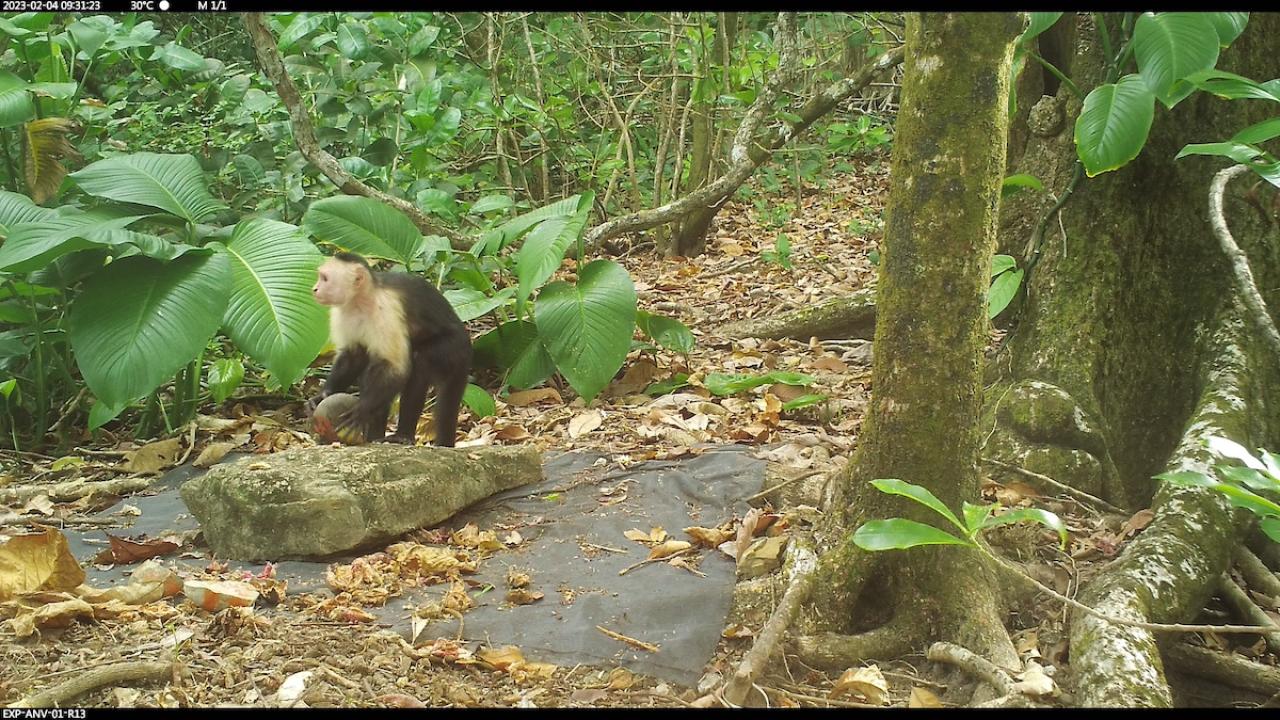UC Davis anthropologists are studying the stone age of capuchin monkeys living on tropical islands off Panama. This 'primate archaeology' is a new approach to archaeology which could give insight into how our own ancestors started using stone tools.
In 2004, Alicia Ibáñez wrote a book about the plant life of Coiba National Park (on the islands of Coiba and Jicarón, Panama) and noted in passing that some capuchin monkeys on the islands used rocks to break open nuts and shellfish. Anthropologists interested in the evolution of tool use, including Professor Nicholas Zwyns at UC Davis, took notice.
Although other non-human primates, including chimpanzees and rhesus macaques, use stone tools, this is the only example in this species, white-faced capuchins. And even in Coiba national park, it's unusual.
“Those islands are the only place in the world where this particular species of monkey is known to use stone tools and it’s really concentrated in two little populations,” said Meredith Carlson, a Ph.D. candidate at UC Davis working with Zwyns.
Carlson is studying the development of stone tool use among these monkeys. Why do some animals pick up stone tools? How does it spread within groups? Perhaps most curiously, why don't all the monkeys on the island do this? The answers could inform how we think about human archaeology.
“One of the really cool opportunities of studying living primates is you actually watch how one thing becomes the other,” Carlson said. “We get to see how some behavior captured on video turns into a pile of nutshells and stones over months and years. We can sort of test out, does the archaeological record really form the way we assume it does.”
Read more about this work at the College of Letters and Science magazine site.
Media Resources
Documenting the Monkey Stone Age in Real-Time (College of Letters and Science magazine)
